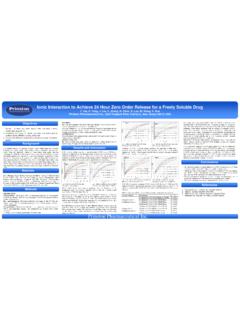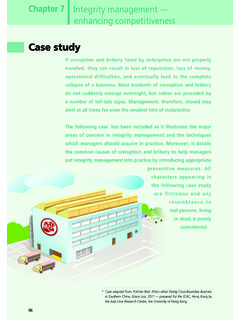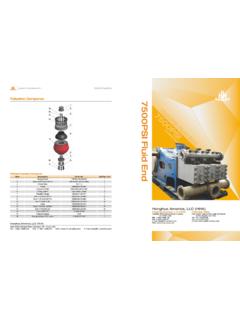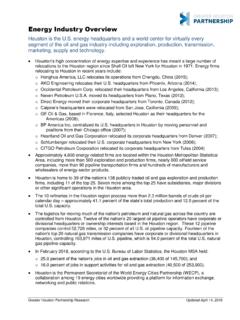Transcription of Prinston Pharmaceutical July 2012
1 Characterization of the Mechanical Properties of High Drug Loading Pellets for Compressed Controlled Release Tablets Jian-Xin Li, Shicheng Yang, honghua Zhao, Rui Luo, Ke Lu, Hong Chen, Minfa Wang, Jun Du and Xiaodi Guo Prinston Pharmaceutical Inc., 2002 Eastpark Blvd, Cranbury, NJ 08512, USA Materials Objectives Background Conclusions References [1] Ghebre-Selassie I, Pharmaceutical Pelletization Technology, Informa Healthcare, 2001. [2] Dashevsky A, Kolter K, Bodmeier R. Int J Pharm. 2004 Jul 26; 279 (1-2): 19-26. [3] Cuppok Y, et al, Int J Pharm. 2011 May 16; 409(1-2):30-7. Extrusion/spheronization process has been widely utilized to prepare pellets with high drug loading for better size/shape uniformity and high density as compared with other alternative technologies for pellet preparation. This process provides pellets for further controlled release coating with consistent surface area and release profile due to better size and shape uniformity1.
2 When the API in the coated pellets is highly water soluble and osmotic, the coated pellets may become mini-osmotic pumps. Drug release from such coated pellets can be modulated by selecting an appropriate core formulation, coating film former and coating pore formers and coating thickness. When the coated pellets are compressed to form tablets, the mechanical properties of the uncoated core and coating formulation will have significant effect on the integrity of the coated pellets during the compaction of the coated pellets2-3. This study used a Texture Analyzer to characterize the mechanical properties of uncoated and coated pellets, and tested the drug release of coated pellets and compressed tablets. To characterize the mechanical properties of uncoated and coated pellets and study the drug release of coated pellets and compressed tablets Results and Discussion The mechanical properties of the uncoated and coated pellets were characterized by Texture Analyzer XT Plus under compression mode.
3 The texture analyzer was equipped with a 5 kg load cell (Texture Technologies Corp., Scarsdale, NY/Stable Micro System, Godalming, UK) using a 4mm round flat end steel probe. The force strain curve for the compression of pellets using the Texture Analyzer is shown in Fig. 1. The first breaking force of the pellets is affected by the size of the pellets and coating. The first breaking force of the pellets was used to characterize the mechanical strength of the pellets of similar size. The coated pellet has higher breaking force as compared with the uncoated pellets. The coating can significantly increase the mechanical strength of pellets. Higher water and binder content can increase the mechanical integrity of the pellets. However, if the water and binder content is too high, it is difficult to break the extrudates into smaller segments for spheronization, and the spheronized particles can be agglomerated due to the tackiness of the material.
4 The formulation containing water and binder were selected for pellet extrusion and spheronization. The resulting pellets have a first breaking force of approximately 540 g. The mechanical integrity of the coated pellets can be improved by the application of coating on the pellets. The mechanical integrity can increase with increasing coating thickness in term of coating weight gain. The first breaking force increases with coating level, as shown in Figure 2. Prinston Pharmaceutical July 2012 Materials Methods The mechanical strength of the uncoated pellets increases with increasing water and binder content of the granulation formulation for extrusion. The application of coating can also improve the mechanical strength of the uncoated pellets. To avoid the damage of coated pellets during tablet compression, a high mechanical strength of pellets is needed. The mechanical property characterization can accelerate the product development process.
5 P158, a water soluble drug, is granulated with microcrystalline cellulose (MCC) PH 101 in a high shear granulator with varying amount of water with or without hydroxypropylmethylcellulose (HPMC, Methocel E5, Dow Chemical) as binder. The pellets were prepared by extrusion spheronization process and then dried in a fluid bed. The pellets were coated with aqueous or organic solution of ethylcellulose coating system. The coating was applied to the pellets by a H ttlin Mycrolab multifunctional fluid bed processor equipped with a bottom sprayer. The coated pellets (40%) with 25% MCC, 15% corn starch, glyceryl behenate (17%) and croscarmellose sodium ( ) were compressed into tablets. The dissolution of coated pellets and tablets were conducted in 500 ml phosphate buffer at pH using USP apparatus 2 at 50 rpm with online UVmethod. The water content used in the granulation can significantly increase the first breaking force of the uncoated pellets.
6 The binder content in the granulation formulation also affects the first breaking force of the uncoated pellets. The dissolution results of the coated pellets and compressed tablet at 6 kN are shown in Figure 3. As can be seen from Figure 3, there is no significant difference in drug release between coated pellets and compressed tablets. This indicates the mechanical strength of coated pellets is higher enough to withstand the compression force . The integrity of coated pellets during tablet compaction may also be affected by the strength of pellets and the compaction force. Figure 3. Dissolution of P158 from coated pellets and compressed tablets. Figure 2. The effect of coating weight gain on the first breaking force of coated pellets. Figure 1. Force strain curve for the pellets under compression. 0 400 800 1200 1600 0 5 10 15 1st Breaking Force , g Coating Weight Gain, % 0 20 40 60 80 100 0 500 1000 % Drug Released Time (min) Coating I, pellets Coating I, tablets Coating II, tablets, Coating II, pellets



